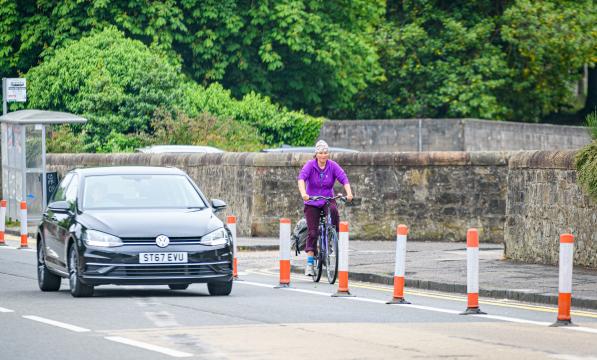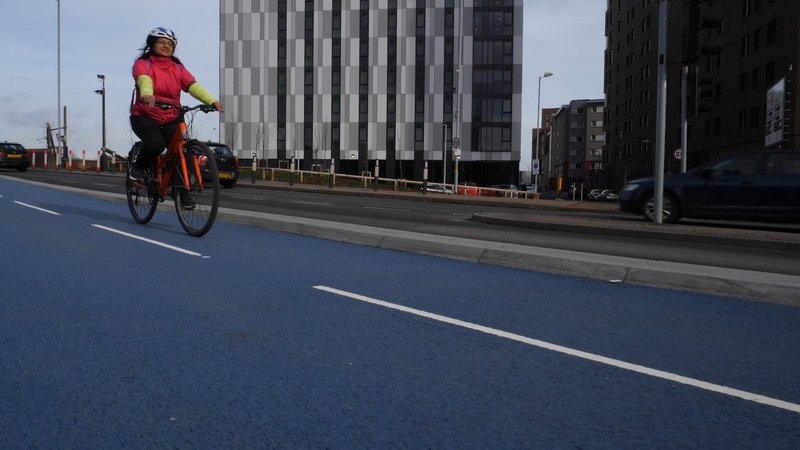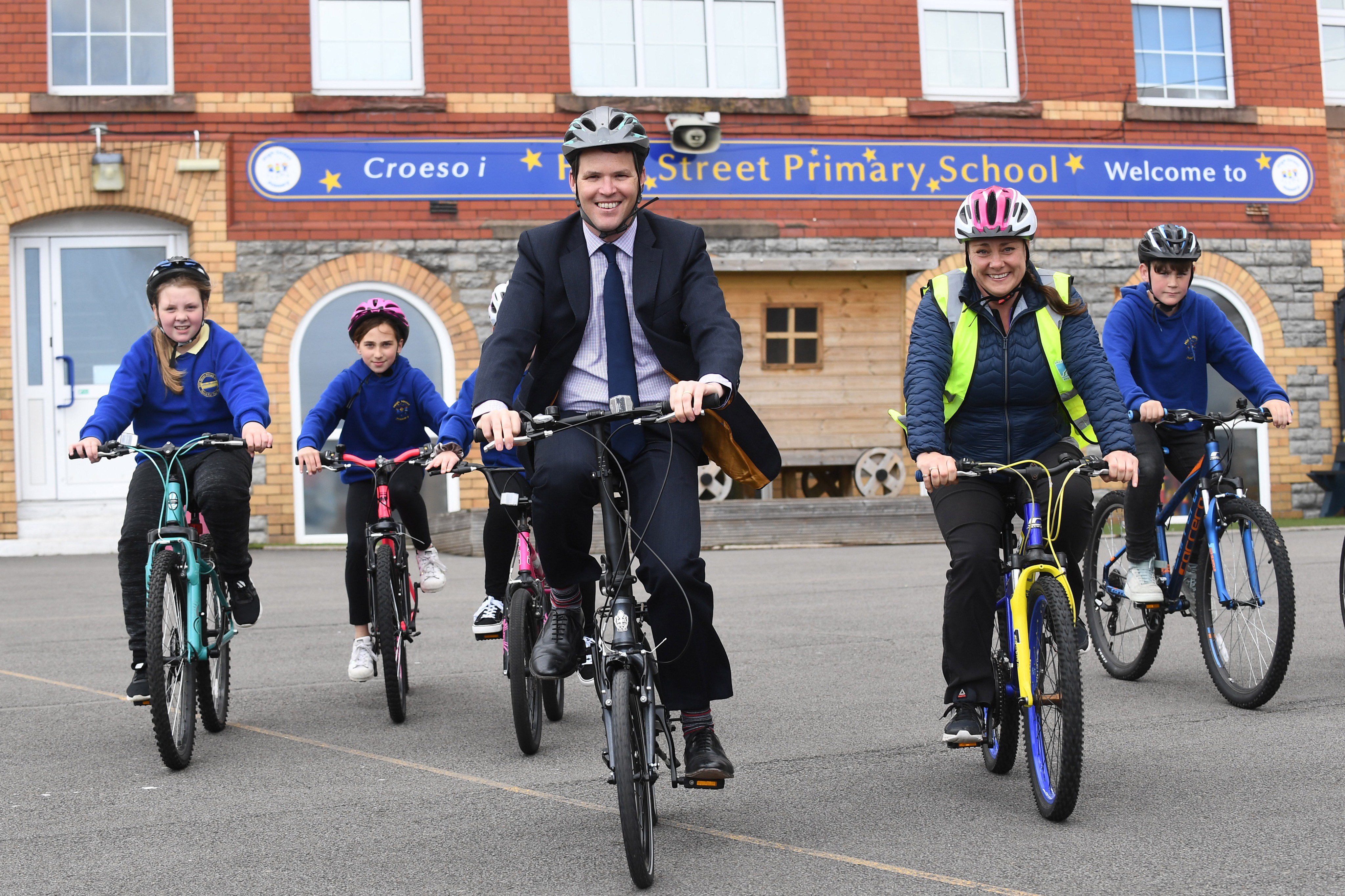Second wave of coronavirus active travel funding must not be squandered

*Since this article was published, the details of each council's bids for the first round of funding have been announced. You can see the detail of your council's bid on this map, and write to your council to encourage them to be ambitious when bidding for the second round of funding here.*
We found out two weeks ago which councils in England had submitted ambitious plans for emergency active travel funding (EATF). Those complying with the Department for Transport’s (DfT) instruction to reallocate road space to people walking and cycling were more likely to get the amount they’d been indicatively allocated, and in some cases more, whilst those without meaningful plans to change the status quo on the roads lost out.
Be bold or lose out
But those funding allocations were just the first round, with the remaining 80% of the EATF still available for councils to bid for. The lesson however from the tranche 1 bids was that to get money for cycling and walking infrastructure through the fund, councils needed to be bold.
Now, we know they also need to act quickly, because last Friday the DfT wrote to every highway authority in England inviting them to submit bids for tranche 2 funding by 7 August.
So you’ve only got three weeks to find out how your council’s spending the money it’s already received, and to influence their next bid, with the DfT making it clear that “funding in the second tranche will also depend on how swiftly and effectively authorities have implemented the plans for which they have received funding in the first tranche”.
With transport spending substantially a devolved matter, the EATF only relates to councils in England, but we’ve provided updates on funding for active travel in Scotland, and this week’s annoucements in Wales in separate articles.
There’s also a link at the bottom of this article to a spreadsheet setting out in sheet 1 what each council in England could have received in tranche 1 and has now been awarded, and in sheet 2 their total EATF indicative allocation.
If your council is within a combined authority (CA), for example Greater Manchester, please note that the CA has been awarded funding to allocate between its constituent councils – though every CA received 100% or more of their tranche 1 indicative allocations.
White paint won’t be funded
I’ve spoken to or received emails from a number of councils this week, and it’s surprising that some still haven’t grasped what the DfT made clear, namely that they have to reallocate road space to get their full indicative allocation of cash.
The DfT couldn’t be clearer on this, stating in their letter to councils last week that “All cycling schemes, permanent or temporary, will need to include segregation or point closures to through traffic: advisory cycle lanes, and those marked only with white paint, will not be funded”.
I’m currently writing to every council leader, some of whom have previously responded to earlier correspondence regarding their active travel plans, about their tranche 2 bids. I’m urging them to be bold, reminding them what the requirements for funding are, and what the revised statutory guidance to highways authorities says about councils being expected to make significant changes to their road layouts to give more space to cyclists and pedestrians.
But they also need to hear from residents, because too many are starting to buckle, with some even removing the temporary infrastructure they’d installed in recent weeks.
Build it on a Friday – take it out on Monday
Surrey County Council, which only received 50% of its indicative allocation of funding in tranche 1, probably takes the prize for the fastest u-turn.
The bollards went in on a Friday night to create a cycling lane in Reigate's town centre, but they were gone by Monday. A local MP complained about traffic chaos that he predicted, and the council panicked because they received some objections from business owners, who hadn’t been given any reassurance about the economic benefits of walking and cycling interventions and infrastructure, for example that:
- Walking and cycling improvements boost the high street and local town centres and can increase retail spend by up to 30%.
- Over a month, people who walk to the high street spend up to 40% more than people who drive there.
But even the boldest and most ambitious councils need to hear that people want more space for walking and cycling, otherwise noisy objectors can win the day, which might tragically be the outcome in Brighton.
Battle of the petitions
It seems a long time ago, but back in April it was Brighton that took the lead, reallocating road space by temporarily closing Madeira Drive to motor vehicle traffic, and opening it up for people to walk and cycle. But the council are now under real pressure to reverse the changes, and the objections to the current closures aren’t all from local people.
Back in June a petition was launched by the National Transport Trust, promoted by Visordown and others to re-open Madeira Drive. Currently, the petition has nearly 10,000 signatories.
A rival petition to make the closure permanent has around 3,000 signatures, with both petitions due to be presented to the council on 23 July. For a while, the number of signatures were running neck and neck, but with no requirement to include your address on the petition, and various national organisations seemingly promoting the petition to reopen Madeira Drive, the numbers signing that petition have soared, placing the council under huge pressure.
Brighton led the way with temporary road closures and was awarded more than its indicative allocation in the tranche 1 bids because its plans were bold and ambitious. But councils are wary of pushing things through when it looks like it’s not what the public want, even though in this case the petitions aren’t necessarily reflective of what the public in Brighton want, though that point’s likely to get lost in the headline!
The willing need to hear your support too!
I’ve referenced Brighton because there can be a temptation to assume that there’s no need to campaign where you’ve got a council with ambition that wants to enable active travel. They’ll just do it anyway won’t they?
But they can be derailed, and they need to keep hearing that the public wants safe spaces for walking and cycling, so it’s as important to support the actions of the willing as it is to seek action from councils deaf to the DfT’s message that to get funding they have to reallocate road space.
So, wherever you are in England, and whether your council’s been bold, unambitious or indifferent to date on active travel interventions and infrastructure, please contact them now.
Take action
We’ve amended our editable emails, so you can write for a second or third time even if you’ve written before, because the draft emails now reflect your own council’s tranche 1 allocation, and ask about their tranche 2 proposals.
It takes minutes to contact your council, or you can spend longer and edit the template emails. And if you’ve got a few more spare minutes, please share the online action with other people you know.
I’d love to say that the quality of the argument always wins the day, but the truth is that councils like to have political cover when they’re doing something different, so being able to say that hundreds or thousands of people contacted them to support their plans really helps.




